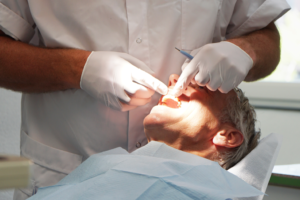The Different Types of Dental Crowns; Tips from a Sauganash Dental Practice

A dental crown is a prosthetic device that is fixed directly onto existing implants or teeth. These devices can also be used for dental bridges in order to fill a gap between one or more missing teeth. There are many different types of dental crowns available, each with its own advantages. In this article, we’re going to go through and discuss several of them.
When it comes to materials, dental crowns can be divided into four main types:
- Ceramic crowns are used to restore the front teeth. The ceramic material blends very easily with the natural color of the teeth, making this type of crown ideal for the front area of the mouth.
- Metal-fused porcelain is a type of crown that’s made from the same porcelain-based material as the ceramic crown. However, the porcelain here is fused to metal, making the crown much more durable.
- Gold alloy crowns are composed of a gold alloy mixed with copper and other metals. This is another very durable crown that forms a strong bond to the tooth or fixture.
- Base metal alloy crowns are highly resistant to corrosion, and they are the easiest to fit, because they require the least amount of healthy tooth material to be removed.
When are Dental Crowns Needed?
Dental crowns are needed in several situations. For example, you may have a large cavity filling that is failing and needs to be replaced. However, the filing is so big that it covered an underlying cavity, which pretty much destroyed the structural integrity of the tooth. In this case, the tooth will break apart without a crown, so a dentist will keep the remaining usable surface and material of the tooth and add a crown on top of it.
You may also have a crown that needs to be replaced. This can happen for several reasons—either a cavity developed under the crown, the crown fell out or broke, or it may have lost its aesthetic. Crowns are also sometimes installed after a root canal. Root canals can affect the structure of the tooth to the point where a crown is needed in order to keep it from breaking apart. However, it’s worth noting that you do not always need a crown after a root canal.
Cracked teeth are a great source of pain and discomfort, and the cracks can range from minor to root-deep. In the latter case, the tooth is unsalvageable. However, in the beginning stages, the intervention required might be fairly minor. Patients may also opt to install crowns in order to restore a beautiful smile. There are cases where the smile can only be restored through this procedure. Finally, patients who grind and clench their teeth a lot will lose the natural height of their teeth. Crowns will help restore the proper function of the teeth and facial structure of the patient in this case.
Having a Dental Crown Installed by a Sauganash Dentist
The installation process for dental crowns by a Dentist in Sauganash is fairly straightforward. It starts by removing the decayed and damaged part of the tooth, which is replaced by a core build filling depending on the amount of tooth that has been removed. This will serve as the foundation of the crown. The extra material is then trimmed and shaped to make room for the crown, and an impression of the oral structures is taken. At this point, the dentist will install a temporary crown while the permanent crown is built in the laboratory. After 2-3 weeks, you will have a second appointment, and the permanent crown will be glued into place.
If you would like to learn more about dental crowns in Sauganash, or would like to setup an appointment with Dr. Ziols, contact Smile Innovations today!

